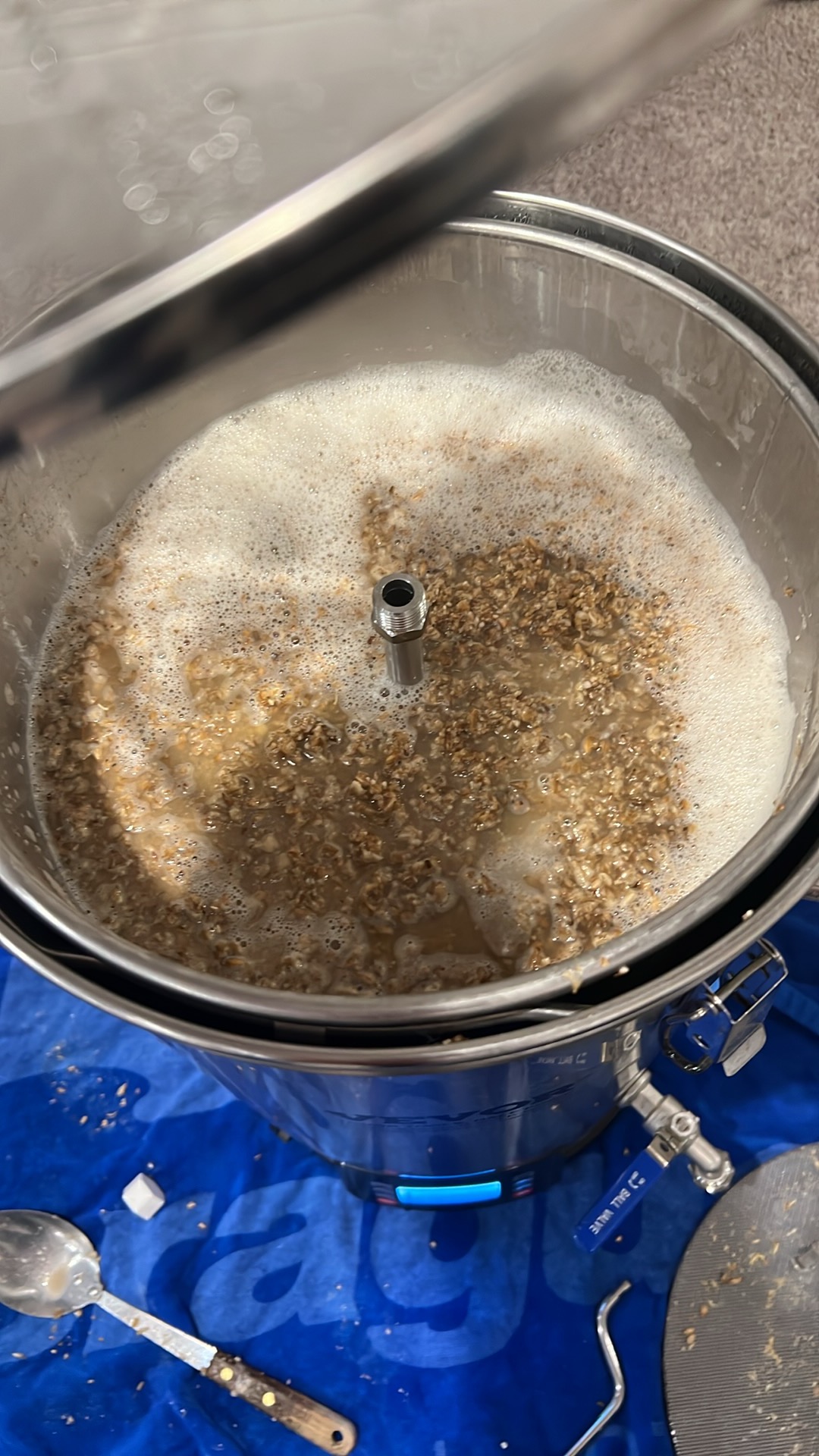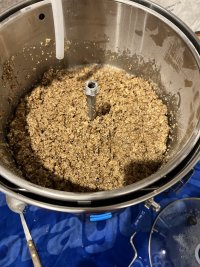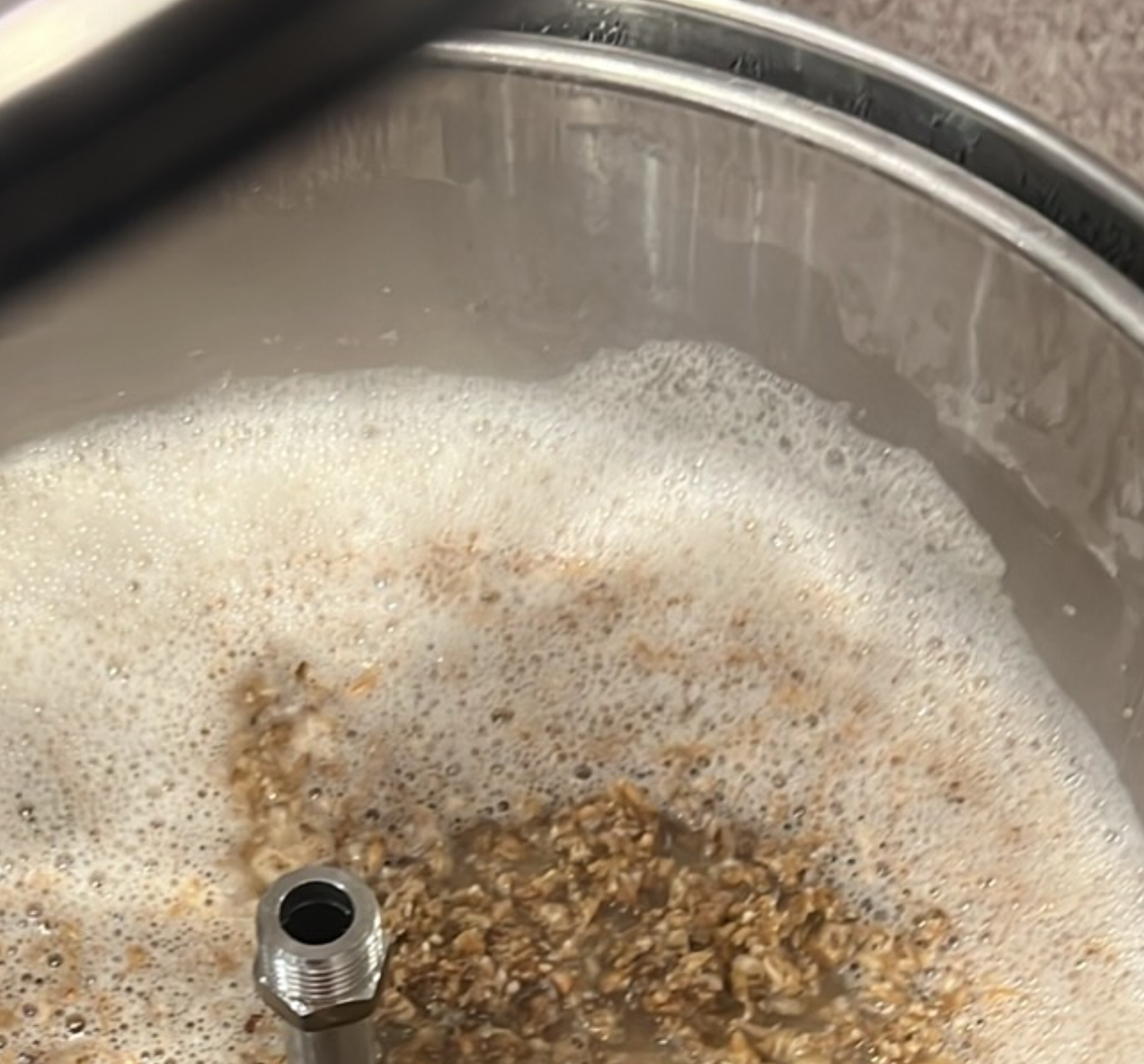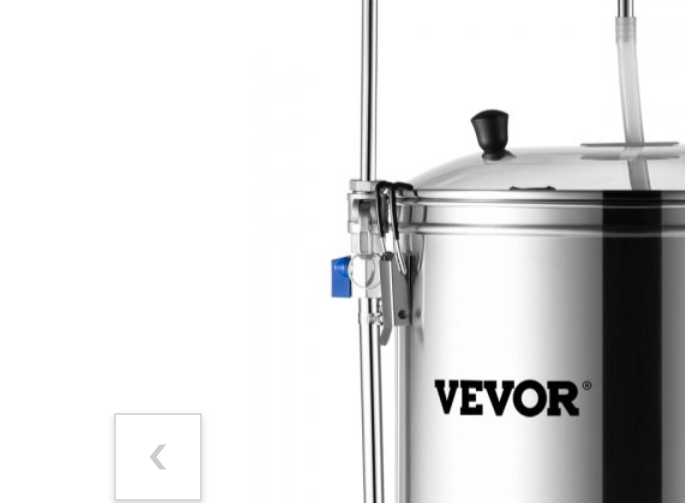Hi everyone! I decided to do my second all grain batch today aiming to make a NEIPA with more juice focused flavors. Was aiming to create something along the lines of a Maplewood Son of Juice but a bit more hoppy.
I had major efficiency issues (I think) once again. My first batch had an aim for 1.07 and I came in at 1.051 and this batch, using a calculator with my grain bill I was targeting around 1.07 OG and hit 1.058 ish using hydrometer and refrac had more like 1.056-1.057.
Target pre boil volume: 6.5 gallon
Actual pre boil volume 6.75 gallon
Target post boil wort 5 gallons
Actual post boil wort 5.35 gallons
Equipment: Vevor All in one brew kettle
Target OG 1.071 @ 75% efficiency
Actual OG 1.058 @ 61% efficiency
Yeast: Wyeast 1318 London III
Mash temp: 155 at mash in brought to 152-153.5 during mash
Grain Bill (14lbs)
9lbs pilz
1lb caramel
2lb wheat malt
1lb flaked oats
1lb flaked wheat
Hop schedule:
1/3 oz Mosaic 60 min
1 oz Citra 10 min
1oz El Dorado 5 min
1 oz Citra Whirlpool @ 165-170
1 oz mosaic Whirlpool @ 165-170
1 oz El dorado Whirpool @ 165-170
3.75 oz remaining hops to be dry hopped after main fermentation done (1.75oz Mosaic, 1oz Citra, 1oz El Dorado)
Hiccups during brew day:
1)The only main thing I can think of is that the recirculating pump kept clogging given the grain bill size so I had to stir the mash more frequently then I usually would otherwise do and the pump would clog 30 seconds later. Eventually I just skipped the pump as it wasn’t doing its job
2) Dilution- Ended up with extra 1.25 liter of wort vs target which had slight impact on OG and thus makes efficiency look a touch worse.
Other notes:
I took a small sample off the top pre boil and had mixed results on my pre boil gravity. I initially saw 1.058, then 1.055 then right as boil started 1.05. Not sure if it’s just not properly mixed to take from the top but this had me hopeful given the higher gravity pre boil and pre evaporation losses.
I batch sparged about 3 gallons throughout the mash draining process. Was much more patient this time and did the sparge additions 4-5x through a 90 min process. I heated the sparge water to 170 this time following guidelines online I saw.
I still think it could end up being a solid beer but I worry now the bitterness vs gravity scale is leaning more bitter than I had wanted given the miss on gravity.
I really want to understand why my efficiency is so low. The guy who sold me the raw malt/grains did tell me if I do more flaked wheat/oats and color additions for the haziness, my efficiency would likely go down because those aren’t going to produce many fermentables. However, that should be accounted for in the grain bill calculator. Any thoughts are appreciated!
I had major efficiency issues (I think) once again. My first batch had an aim for 1.07 and I came in at 1.051 and this batch, using a calculator with my grain bill I was targeting around 1.07 OG and hit 1.058 ish using hydrometer and refrac had more like 1.056-1.057.
Target pre boil volume: 6.5 gallon
Actual pre boil volume 6.75 gallon
Target post boil wort 5 gallons
Actual post boil wort 5.35 gallons
Equipment: Vevor All in one brew kettle
Target OG 1.071 @ 75% efficiency
Actual OG 1.058 @ 61% efficiency
Yeast: Wyeast 1318 London III
Mash temp: 155 at mash in brought to 152-153.5 during mash
Grain Bill (14lbs)
9lbs pilz
1lb caramel
2lb wheat malt
1lb flaked oats
1lb flaked wheat
Hop schedule:
1/3 oz Mosaic 60 min
1 oz Citra 10 min
1oz El Dorado 5 min
1 oz Citra Whirlpool @ 165-170
1 oz mosaic Whirlpool @ 165-170
1 oz El dorado Whirpool @ 165-170
3.75 oz remaining hops to be dry hopped after main fermentation done (1.75oz Mosaic, 1oz Citra, 1oz El Dorado)
Hiccups during brew day:
1)The only main thing I can think of is that the recirculating pump kept clogging given the grain bill size so I had to stir the mash more frequently then I usually would otherwise do and the pump would clog 30 seconds later. Eventually I just skipped the pump as it wasn’t doing its job
2) Dilution- Ended up with extra 1.25 liter of wort vs target which had slight impact on OG and thus makes efficiency look a touch worse.
Other notes:
I took a small sample off the top pre boil and had mixed results on my pre boil gravity. I initially saw 1.058, then 1.055 then right as boil started 1.05. Not sure if it’s just not properly mixed to take from the top but this had me hopeful given the higher gravity pre boil and pre evaporation losses.
I batch sparged about 3 gallons throughout the mash draining process. Was much more patient this time and did the sparge additions 4-5x through a 90 min process. I heated the sparge water to 170 this time following guidelines online I saw.
I still think it could end up being a solid beer but I worry now the bitterness vs gravity scale is leaning more bitter than I had wanted given the miss on gravity.
I really want to understand why my efficiency is so low. The guy who sold me the raw malt/grains did tell me if I do more flaked wheat/oats and color additions for the haziness, my efficiency would likely go down because those aren’t going to produce many fermentables. However, that should be accounted for in the grain bill calculator. Any thoughts are appreciated!
Last edited:

































![Craft A Brew - Safale S-04 Dry Yeast - Fermentis - English Ale Dry Yeast - For English and American Ales and Hard Apple Ciders - Ingredients for Home Brewing - Beer Making Supplies - [1 Pack]](https://m.media-amazon.com/images/I/41fVGNh6JfL._SL500_.jpg)




























